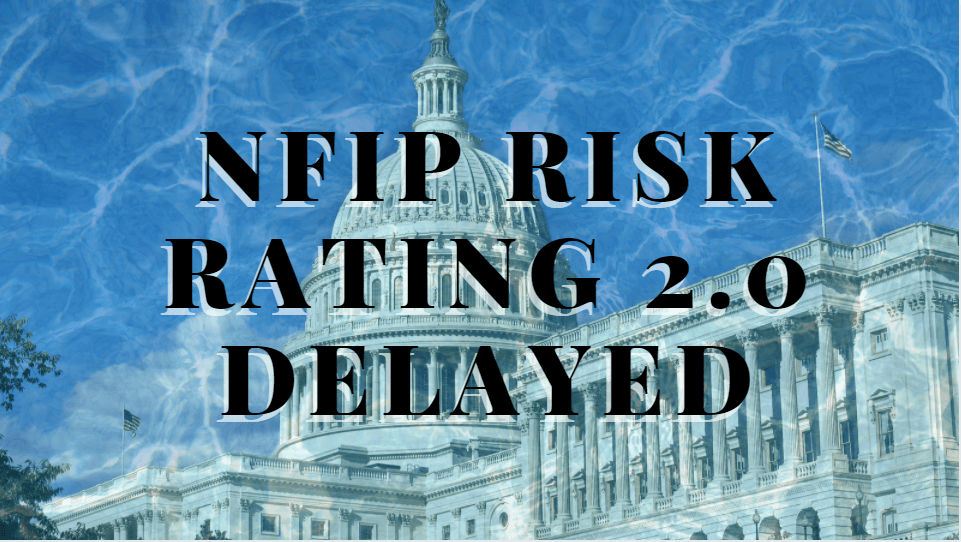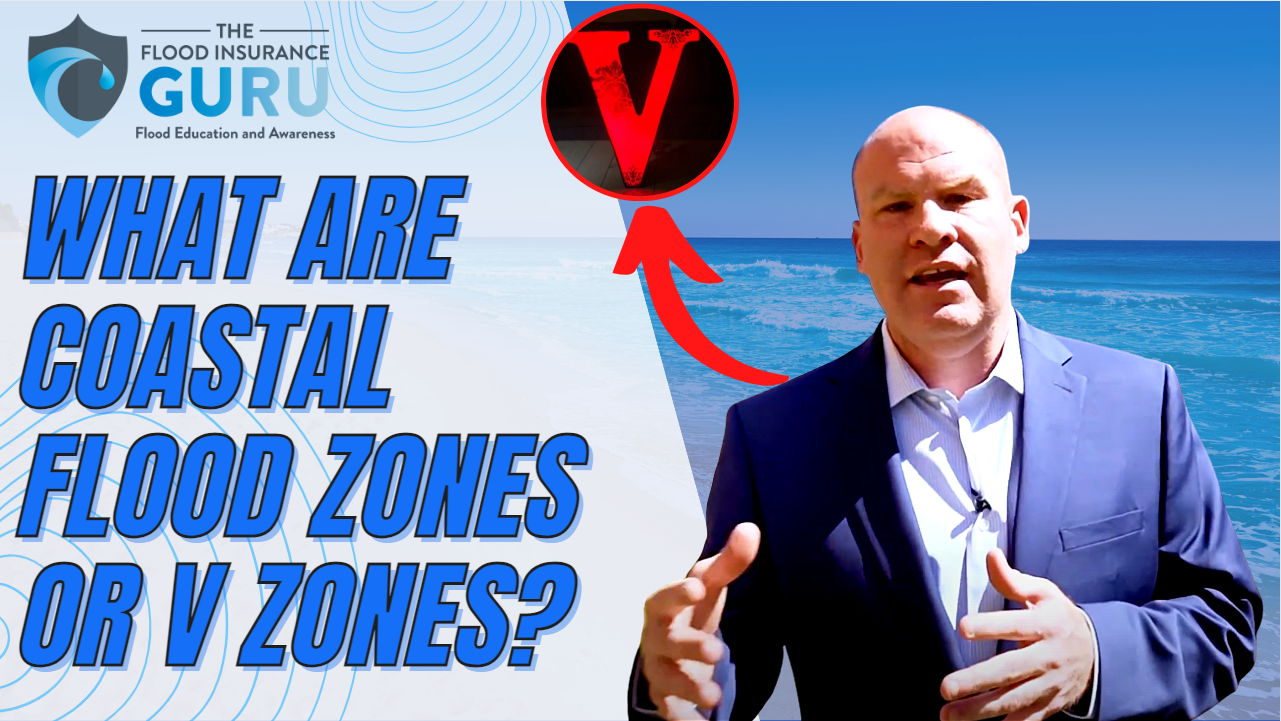
The National Flood Insurance Program has been trying to make major updates to its flood insurance program for many years.
A Changing Program
Ever since 2012 when the Biggert Waters Act went into place changes have been coming for the National Flood Insurance Program also known as the NFIP.
The original program was put into place ion 1968 to help residents along the Mississippi River who were constantly impacted by flooding. Through the years small changes have been made like the wait periods the program currently has in place.
Originally when the program was created there were no wait periods. However FEMA who run the National Flood Insurance Program noticed that many property owners were only buying flood insurance right before a flood and then trying to cancel the flood insurance policy right after the flood threat went away.
As you can imagine this could bankrupt any program pretty quickly. So FEMA implemented the wait period program for the federal flood insurance program.
Wait Periods
Today there are three types of wait periods a homeowner or business owner with the National Flood Insurance Program
- Loan closing
- New mapped policies
- Standard wait period
When it comes to loan closings there is no wait period with the National Flood Insurance Program or even private flood insurance policies most of the time.
Newly mapped policies are a little bit different. generally these are areas that have recently been moved in the special flood areas or even high risk flood areas. The wait period on these policies is only one day after the policy has been put in place.
When it comes to wait periods everything else normally falls within the standard 30 day wait period. This means when you take out a flood policy it does not really go into effect for 30 days.
Now that is one of the changes that has happened through the years. When it comes to flood insurance rates on homes across the country FEMA has made many changes and efforts through out the years. It could be on what they call pre-firm or post-firm structures.
Normally in April and October NFIP releases updates to the program. Many times this means increases on properties or changes in the rating structure.
This can have a big impact on homeowners and business owners across the country.
In fact the recent April 2021 release could have major negative effects on commercial flood policies across the country. Some of these policies could see as much as a 25% increase on flood insurance premiums,
So why the increases?
As we mentioned this has been an evolving program since 1968 when it comes to making adjustments. One major thing that is always changing is flood risk in areas like Florida, Louisiana, Texas, North Carolina, and other states.
The flood insurance coverage needed on buildings is also changing. The replacement cost of some of these buildings is starting to quickly increase. At the same time as flood risks change the risk of flooding in these areas is also changing. This is causing a lot more flood claims to be paid out without maybe taking in more flood insurance premiums. Louisiana Realtors and other realtors across the country are starting to see this have a big impact on real estate markets across the country.
Current flood insurance does not seem to be enough to help protect these properties especially with flood damage increasing in coastal communities and non coastal communities across the country.
Events like hurricane Harvey have shown the flood insurance industry has to change in order for it to survive.
Current rating methodology with the NFIP is out of date and they will be the first ones to tell you that. As flood insurance maps across the country continue to get updated flood insurance costs are also starting to change. You have private flood insurance companies that are using different technology which is changing their current rating methodology.
This is one reason why many times private flood insurance can be up to 50% lower in some flood prone areas. This can apply to homeowners, business owners, multi-unit, and commercial properties as well.
A New Program
So what does all of this have to do with NFIP Risk Rating 2.0. Well the new 2.0 program that NFIP was scheduled to releases in October 2020 was delayed to October 2021 and it looks like it could be delayed again until October 2022.
So what are some of the things this program looks to change?
- Coverage amounts
- Zone rating
- Subsidized rate
- Replacement cost factors
- Distance to water
Currently as we write this article in the spring of 2021 the National Flood Insurance Program only offers residential coverage up to $250,000 on buildings and $100,000 on contents. On commercial buildings it offers $500,000 on buildings and $500,000 on business inventory.
When the program is updated the National Flood Insurance Program hopes to update the residential side closer to $500,000. Could this cause premium increases?
Yes it could but it could also give property owners the coverage they really need on a building. Currently you have to take out a private flood insurance policy if you want any more coverage over the $250,000. When you do this it is called an excess flood insurance policy.
Something else NFIP Risk rating 2.0 hopes to update is flood zone ratings. Currently if you have 2 buildings in flood zone x more than likely they have the same rate. However as you can imagine the flood risk could be completely different. especially depending on the type of flooding.
NFIP Risk rating 2.0 hopes to give a unique rating to each structure in all types of flood zones and flood risk areas.
Coastal areas could see a big impact as there is a push to do away with subsidized rates in these areas. This could easily see some flood insurance premiums increase 200-300%. As you can imagine this could have a big impact on local real estate markets.

In 2021 we have seen building materials skyrocket which could have a big impact on the replacement cost of a building. Currently the National Flood Insurance Program only uses replacement cost as a rate factor in costal zones also known as flood zone V. As this new program is implemented they look to use this as a factor in all flood ones.
The last change we will look at may have the biggest impact out of all the changes. That is the distance to water or the flood source. As you can imagine this could have a big impact on beach houses across the country. It could also have a big impact on someone who might have a creek running through their back yard.
One thing that could change flood insurance in the U.S. is also the distance from a dam and levee. Some of these are accredited and some are not. This is exactly what recently happened in parts of Hawaii causing drastic rate increases through out the Hawaiian islands.
The city of New Orleans showed us after hurricane Katrina how important the health of a levee can be, especially to the protection pf single family homes.
Distance to the coast or a lake or river may not be the only impact on distance to water. Flooding source and heavy rains could also have some impacts on ratings when the new program is released. Flood frequency has picked up in many areas over the last 10 years that experience heavy rains. This program has hopes to educate property owners on what the true risk of flooding is and why it is the leading cause of natural disasters.
As you can imagine with all these changes you could see many flood insurance premiums increase or decrease depending on the situation. This is why as a property owner it is important to get some education on understanding of flood. As residents prepare for this changes they have also reached out to their elected officials with help and guidance.
One other thing that is being reviewed is the use of flood maps for insurance purposes. When this program is released it looks like the plan is to have these maps used mainly for mortgage companies and from a regulatory stand point.
Many congress members have also pushed back that these changes are happening too fast and they need more time to see what the impacts on local residents could be.
Will It Happen?
So will we see this program implemented in October 2021?
More than likely not as FEMA just delayed the rates for the new program it was scheduled to release in April 2021. This will make it very challenging for FEMA to release the new rates to the Write Your Own carriers in time for a October 2021 release.
So what about October 2022?
We shall see as COVID 19 pandemic continues to impact everyone, especially since FEMA is helping with the vaccine roll out.
Remember though this won't impact the regular rate updates that FEMA released for April 1, 2021. You can find some of these updates by watching the video below.
If you want to learn more about these changes then make sure to subscribe to our Youtube channel where we put our daily flood education videos or subscribe to our daily podcast.
Remember we have an educational background in flood mitigation. This means we are here to help you understand flood risks, flood insurance, and mitigating your property long term. So if you are looking for a flood specialist to help me make sure to contact us.


